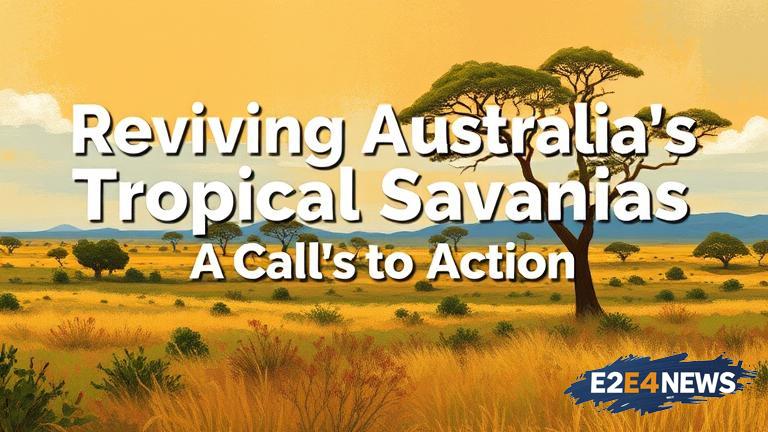Australia’s tropical savannas, which cover nearly 20% of the country, are facing a severe decline in small mammal populations. The main culprits behind this decline are uncontrolled fires and the proliferation of feral animals, such as cats and foxes. These invasive species have been wreaking havoc on the native wildlife, and if left unchecked, could lead to the extinction of many unique and endemic species. The Australian government has launched several conservation initiatives aimed at controlling fires and eradicating feral animals from the tropical savannas. One such initiative is the establishment of fire breaks and the implementation of controlled burning practices. This approach has shown promising results, with a significant reduction in the number of uncontrolled fires and a subsequent increase in small mammal populations. Additionally, conservation efforts have focused on removing feral animals from the savannas, which has also contributed to the recovery of native species. However, more needs to be done to address the scale and complexity of the problem. The Australian government has committed to increasing funding for conservation efforts and has established partnerships with local communities and indigenous groups to develop and implement effective conservation strategies. The involvement of indigenous communities is crucial, as they possess traditional knowledge and skills that are essential for managing the land and conserving native species. Furthermore, research has shown that the loss of small mammal populations has significant implications for the entire ecosystem, including the decline of vegetation and the degradation of soil quality. The restoration of small mammal populations is therefore critical for maintaining the health and resilience of the tropical savannas. In recent years, there has been a growing recognition of the importance of conservation efforts in Australia’s tropical savannas, and the need for a coordinated and sustained approach to address the decline of small mammal populations. The Australian government has established a number of protected areas, including national parks and wildlife sanctuaries, which provide a safe haven for native species. However, more needs to be done to protect these areas from the threats of fire and feral animals. The use of technology, such as camera traps and drones, has also been explored as a means of monitoring and managing feral animal populations. Overall, the conservation of Australia’s tropical savannas requires a long-term commitment to controlling fires and eradicating feral animals, as well as a sustained effort to restore and protect native habitats. By working together, we can help to revive the small mammal populations and preserve the unique biodiversity of Australia’s tropical savannas. The conservation of these ecosystems is not only important for the environment, but also for the local communities that depend on them for their livelihoods. In conclusion, the decline of small mammal populations in Australia’s tropical savannas is a complex and pressing issue that requires a coordinated and sustained conservation effort. By controlling fires and eradicating feral animals, we can help to restore the balance of these ecosystems and preserve the unique biodiversity of the region.
